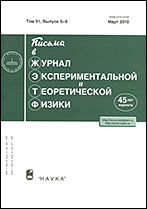|
This article is cited in 3 scientific papers (total in 3 papers)
CONDENSED MATTER
Features in the electronic structure and photoemission spectra of organic molecular semiconductors: The molecules of metal-phthalocyanines and PTCDA
E. V. Tikhonova, Yu. A. Uspenskiib, D. R. Khokhlova
a M. V. Lomonosov Moscow State University, Faculty of Physics
b P. N. Lebedev Physical Institute, Russian Academy of Sciences
Abstract:
The role of many-electron effects in the formation of electronic quasiparticle spectra in organic molecular semiconductors (OMS) is analyzed. Many-body perturbation theory, ab initio calculations of metal phthalocyanines and PTCDA molecules, and experimental photoemission spectra are applied to this analysis. It is shown that density functional theory (DFT) poorly reproduces the electronic spectra of OMS. The use of a hybrid functional method (HFM) provides precise reproduction of both valence and conducting bands, while the HOMO-LUMO gap remains underestimated. The correct gap width is obtained in both DFT and HFM, when it is calculated through ionization and affinity energies. It is shown that such an approach gives a formula for gap correction due to electron correlations, which is close to an expression derived from the GW approximation.
Received: 24.05.2013
Citation:
E. V. Tikhonov, Yu. A. Uspenskii, D. R. Khokhlov, “Features in the electronic structure and photoemission spectra of organic molecular semiconductors: The molecules of metal-phthalocyanines and PTCDA”, Pis'ma v Zh. Èksper. Teoret. Fiz., 98:1 (2013), 17–22; JETP Letters, 98:1 (2013), 14–18
Linking options:
https://www.mathnet.ru/eng/jetpl3457 https://www.mathnet.ru/eng/jetpl/v98/i1/p17
|


| Statistics & downloads: |
| Abstract page: | 298 | | Full-text PDF : | 103 | | References: | 65 | | First page: | 5 |
|





 Contact us:
Contact us: Terms of Use
Terms of Use
 Registration to the website
Registration to the website Logotypes
Logotypes









 Citation in format
Citation in format 
